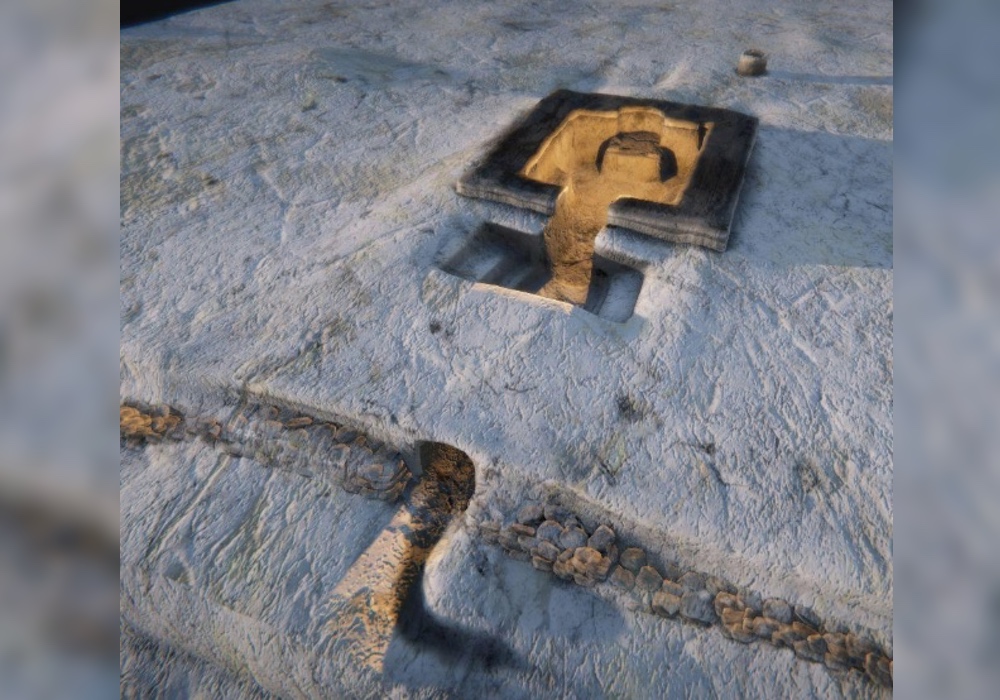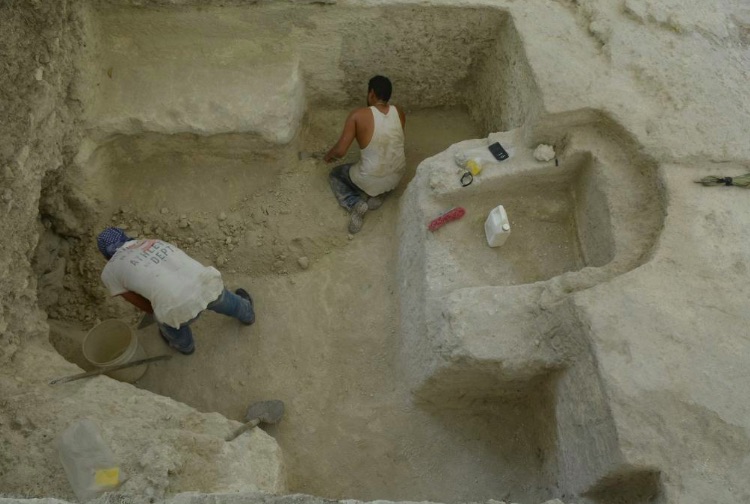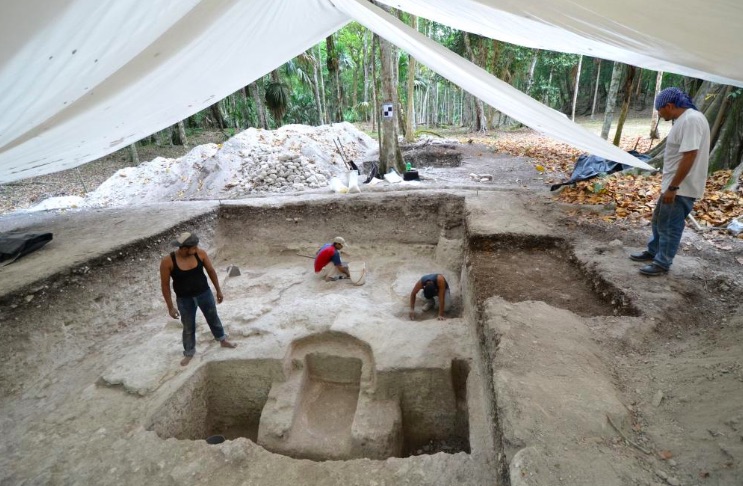Ancient 'Tomb' Unearthed in Guatemala Turns Out to Be Maya Steam Bath

Archaeologists have discovered an ancient steam bath that the Maya likely used for religious rituals — and possibly relaxation — more than 2,500 years ago.
The steam bath, discovered in the ancient Maya city of Nakum in what is now Guatemala, had fragmented ceramic vessels and obsidian tools in it — artifacts that were possibly used for rituals, said excavation co-leader Jarosław Źrałka, an assistant professor of New World archeology at Jagiellonian University in Kraków, Poland.
"It is one of the oldest steam baths in Mesoamerica," Źrałka told Live Science in an email, adding that the bath is "almost entirely carved into the limestone bedrock." [Photos: Carvings Depict Maya Ballplayers in Action]
Źrałka and his team found the steam bath about five years ago, but they're still excavating the site.
"We initially thought that we were dealing with a tomb," excavation superperviser Wiesław Koszkul, an archaeologist at Jagiellonian University in Kraków, told Science in Poland. "But while gradually uncovering subsequent parts of the structure, we came to the conclusion that it was a steam bath."

Both the ancient and modern Maya people associate steam baths with ritual activity, the archaeologists said. For instance, the ancient elite, including priests, likely used baths not just to wash their bodies but also to symbolically cleanse their souls before important events, the researchers said.
"In the Maya beliefs, caves and baths are treated almost the same way: the places where not only the gods, but also the first people were born and emerged from," Źrałka told Science in Poland. "They are also considered to be entries to the underworld, the world inhabited by gods and ancestors. Caves and steam baths were also associated with the harvest and the place of origin of life-giving water."
Sign up for the Live Science daily newsletter now
Get the world’s most fascinating discoveries delivered straight to your inbox.
The steam bath certainly looked cave-like when the archeologists first discovered it. First, the team found a downward-sloping tunnel carved into the rock. But this tunnel is actually where the steam bath's excess water flowed, the archaeologists soon discovered.

The Maya also constructed an easy way to enter the bath; both sides of the tunnel have stairs leading up to the steam room, which has rock-cut benches where the bathers could sit. Across from the entrance is an oval-shaped hearth, where large stones were likely placed, heated up and then splashed with water to produce steam, the archaeologists said.
Then, the excess water would have flowed down a channel in the middle of the floor, toward the exit, the archaeologists added. It's also possible that the Maya made a giant structure out of wood, stone and mortar to keep the steam from leaving the room, the archaeologists said.
The Maya used the bath from about 700 B.C. to 300 B.C. before covering it with mortar and rubble. "Perhaps it was related to the change of dynasty, which ruled in Nakum, or other important changes in the Mayan social and religious life," Koszkul told Science in Poland.
Archaeologists have discovered other ancient Maya baths over the years, but most of those were only fragments of the original structures. "That is why our discovery of an almost completely preserved complex is so important," Źrałka told Science in Poland.
- In Photos: Hidden Maya Civilization
- In Photos: Ancient Maya Carvings Exposed in Guatemala
- In Photos: How Ancient Sharks and 'Sea Monsters' Inspired Mayan Myths
Originally published on Live Science.

Laura is the archaeology and Life's Little Mysteries editor at Live Science. She also reports on general science, including paleontology. Her work has appeared in The New York Times, Scholastic, Popular Science and Spectrum, a site on autism research. She has won multiple awards from the Society of Professional Journalists and the Washington Newspaper Publishers Association for her reporting at a weekly newspaper near Seattle. Laura holds a bachelor's degree in English literature and psychology from Washington University in St. Louis and a master's degree in science writing from NYU.










